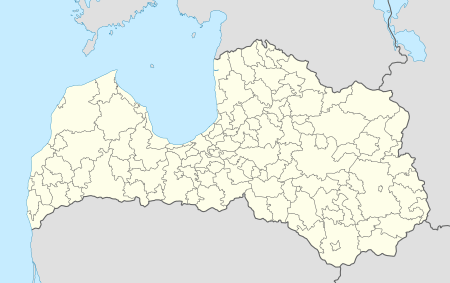Slītere National Park
| Slītere National Park | |
|---|---|
|
IUCN category II (national park) | |
 Map of Latvia | |
| Location | Talsi district, Kurzeme Region, Latvia |
| Coordinates | 57°37′27″N 22°17′40″E / 57.62417°N 22.29444°ECoordinates: 57°37′27″N 22°17′40″E / 57.62417°N 22.29444°E |
| Area | 265 km2 (102 sq mi) |
| Established | 2000 |
Slītere National Park (Latvian: Slīteres nacionālais parks) is a national park in Talsi district, Kurzeme Region, on the west coast of Latvia. Although formally established in 2000, it is based on former Slītere Nature Reserve, one of the oldest nature reserves in Baltic States. It covers an area of 265 km2 (102 sq mi) (including 101 km2 (39 sq mi) in the Baltic Sea), making it the smallest national park in Latvia.
Slītere National Park is famous for the broadleaf forests covering former coastline and for the unique complex of dunes (called kangari in Latvian) and depressions (vigas) featuring inter-dune bogs. Most of the broadleaf forest is located on the "Zilie Kalni" or "Blue Hills", which are geologically one of the most recognizable features of the park. Thousands of years ago, the Zilie Kalni formed the ancient shore of the Baltic ice lake. Another 30% of the park is covered by coniferous forest. The park hosts hundreds of species of plants and bryophytes, 29 species of which are found nowhere else in Latvia. Slītere National Park lies along the Baltic migratory flyways, making Slītere one of the best places in Latvia for birdwatching. Virtually all species of bird found in Latvia have been observed in Slītere, with many as 60,000 birds per hour have been observed flying over during the spring and fall migrations. The grey wolf, Eurasian lynx, and elk can all be found within Slītere. The national park has many rare species of insect and snail due to its high plant and biome diversity. Along the coast, the Baltic grey seal is found, and the rarer ringed seal is occasionally seen.
Slītere protects a large portion of the Līvõd Rãnda - the Livonian Coast, featuring Livonian villages. See Cape Kolka and villages Vaide, Saunags, Pitrags.